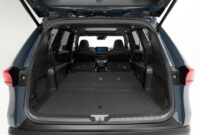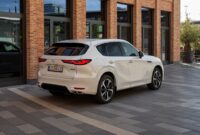The theory says that the Low Emission Zones came into force on January 1, the practice… is something else. There are cities, yes, that have done their homework on time: Madrid is one of them. The capital of Spain has had its own LEZ for a long time and its limitations are not only active, but also progressive: since 2023 cars without an environmental label are prohibited from driving on the M-30, but there are no cameras monitoring this restriction.
The first driving bans, regulated in the Sustainable Mobility Ordinance, were applied as of January 1, 2022: from that day, Category A vehicles (those without a DGT sticker) cannot access inside the M-30. Until four days ago they could drive on the ring road, now things have changed.
New ban in 2023
These days Borja Carabante (delegate for Mobility and Environment) recalled that in 2023 the following restriction came into force: cars without an environmental badge They cannot, either, move on the M-30.
A ban that only affects passenger cars: trucks, vans, motorcycles and mopeds will be the exceptions of the norm until December 31, 2024. Vehicles that, as of January 1, 2022, were domiciled in Madrid in the Vehicle Registry and were registered in the Register of the Tax on Mechanical Traction Vehicles ( IVTM) of the city council.
no cameras
Surveillance of access to the interior of the M-30 is carried out through 111 devices: They had to join 44 cameras, which have not arrived on time and that they should be at all the entrances to the ring road. As collected We are Madrid (El Diario)Kapsch TrafficCom, the company to which the project has been awarded, has three months to install them: at the end of March They should be working, but the fines (200 euros; 100 with prompt payment) will be a reality in June.
What will happen until then? Borja Carabante has explained that mobility agents will do “random checks” to guarantee compliance with the restrictions: it has not specified the number of troops, nor where these checks will be carried out. It is possible to think that they will be in the accesses to the M-30 from the adjoining neighborhoods and from other roads. There are many who consider this solution insufficient to verify that cars without a label comply with the restrictions that weigh on them. Not in vain, according to Emesa, On average, 1,500,000 journeys are made on this route every day.
more limitations
Prohibiting the access of ‘A’ vehicles to the interior of the M-30 and to the M-30 itself are the first two phases of a plan that will progressively increase the restrictions for the most polluting cars.
On January 1, 2024 they will not be able to enter or circulate on the urban public roads of Madrid. A year later, in 2025, this ban will be extended to passenger cars domiciled in the capital of Spain and that are on the municipal register. Thereafter, the limitations will also affect the vehicles included in the exemption: trucks, vans, motorcycles and mopeds.






